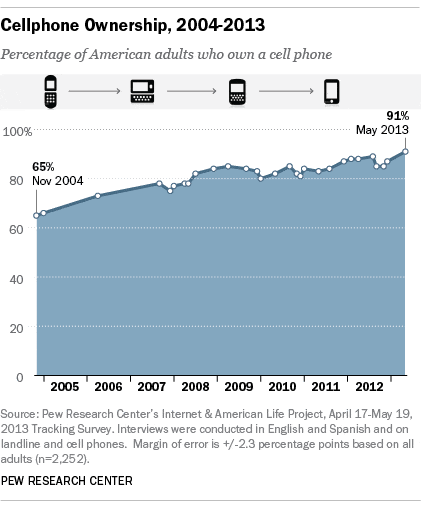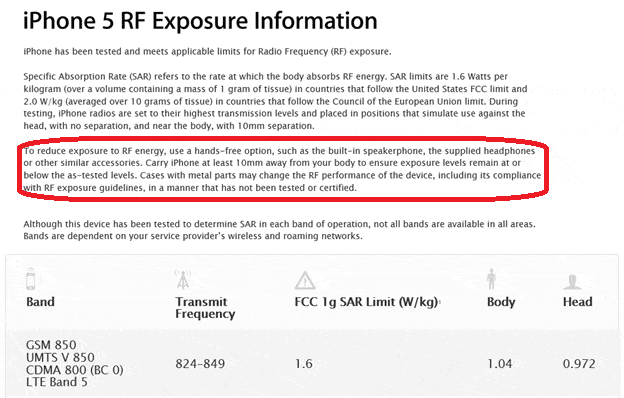Your cart is currently empty!

Radiation from Cell Phones: A Growing Health Concern
Last Updated on February 20, 2024

Everyone has a cell phone.
According to the latest Pew Research, cell phone ownership among adults has exceeded 90%. The cell phone has become the most quickly adopted consumer technology in the history of the world.
With the advent of smart phones, enabling everything from teleconferences to video games, cell phones are becoming more and more a part of our daily lives.
These handy contraptions have spread in usage virally across the globe. According to the UN, presently 6 out of 7 billion people (total world population) have access to mobile phones, which is more than have those who have access to working toilets.
Cell Phone Radiation
According to the IDC, 79% of people between 18-44 carry their smart phones with them 22 hours a day. As a reminder, there are 24 hours in a day.
Consequently, the effect of radiation from cell phones on human health has become a topic of keen interest and study in recent history.
Radiation is long been known to cause changes in living tissue. These changes have been linked to cancer and other disease states.
Traditionally, it has been thought that only high doses of radiation could cause serious harm. However, more recent information suggests that even long-term exposure to low levels of radiation over long periods of time can be harmful as well.
All electronic devices emit low levels of radiation as a result of how they operate. Cell phones emit both Radio Frequency (RF) and Extremely Low Frequency (ELF) electromagnetic radiation, which people are exposed to on a much more frequent level than many other devices.
Researchers, concerned with public health, have begun to seriously delve into the effects of radiation from cell phones. Cell phone radiation is a more persistent exposure than many other forms of radiation.
Although the energy emitted from cell phones is considered low, the chronic effects of long-term exposure are not fully understood. It is the long-term effects of radiation exposure from cell phones that scientists worry about.
Current Research on Cell Phone Radiation
Many early cell phone studies published conflicting results regarding the effects of radiation from cell phones.
Some studies argue that cell phone radiation actually protected users from developing cancer. Others argue cell phones increased the incidence of cancer.
This confusion led to studies being published to discuss the legitimacy of previously published work to-date.
For instance, it was pointed out that many of the studies that found no correlation between radiation from cell phones and cancer were funded by the cell phone industry and had serious design flaws, such as exclusion of certain brain tumor types or sample populations.
Since then, several international groups have formed to study the effects of cell phone radiation.
The International Agency for Research on Cancer (IARC), part of the World Health Organization of the United Nations has conducted epidemiological studies into the occurrence of cancer worldwide.
In 2011, the IARC classified mobile phone radiation as Group 2B, possibly carcinogenic, the same category as lead, engine exhaust, and chloroform. This means that there could be some risk of carcinogenicity; additional research into the long-term heavy use of mobile phones is needed.
In response, manufacturers of many popular cell phones have warned consumers to keep their device away from their body and to minimize their exposure to radiation from cell phones.
Recently, Time Magazine even published an article on cell phone radiation, in a report card format, describing the “worst in terms of emission” to the “middle of the pack” to “low scorers.” On their list, Blackberries, Motorola, HTC, iPhone, Samsung, Sanyo, and Sony.
Since then, several studies have described the mechanism by which radiation from cell phones can cause cancer and other disease states.
One study describes how radiation from cell phones can initiate chromosomal abnormalities and alter the mitotic index, which increases the frequency of aberrations over time in a living organism. Accumulation of aberrations, leading to the uncontrolled proliferation of abnormal cells, is the definition of cancer.
Conclusion
To be safe, it is important to stay informed on the latest research on cell phone radiation. Meanwhile, it may be wise to keep your cell phone away from your body, limit your use of your cell phone, or consider using a cell phone radiation shield.
As radiation from cell phones is still being studied, caution is advised.






























